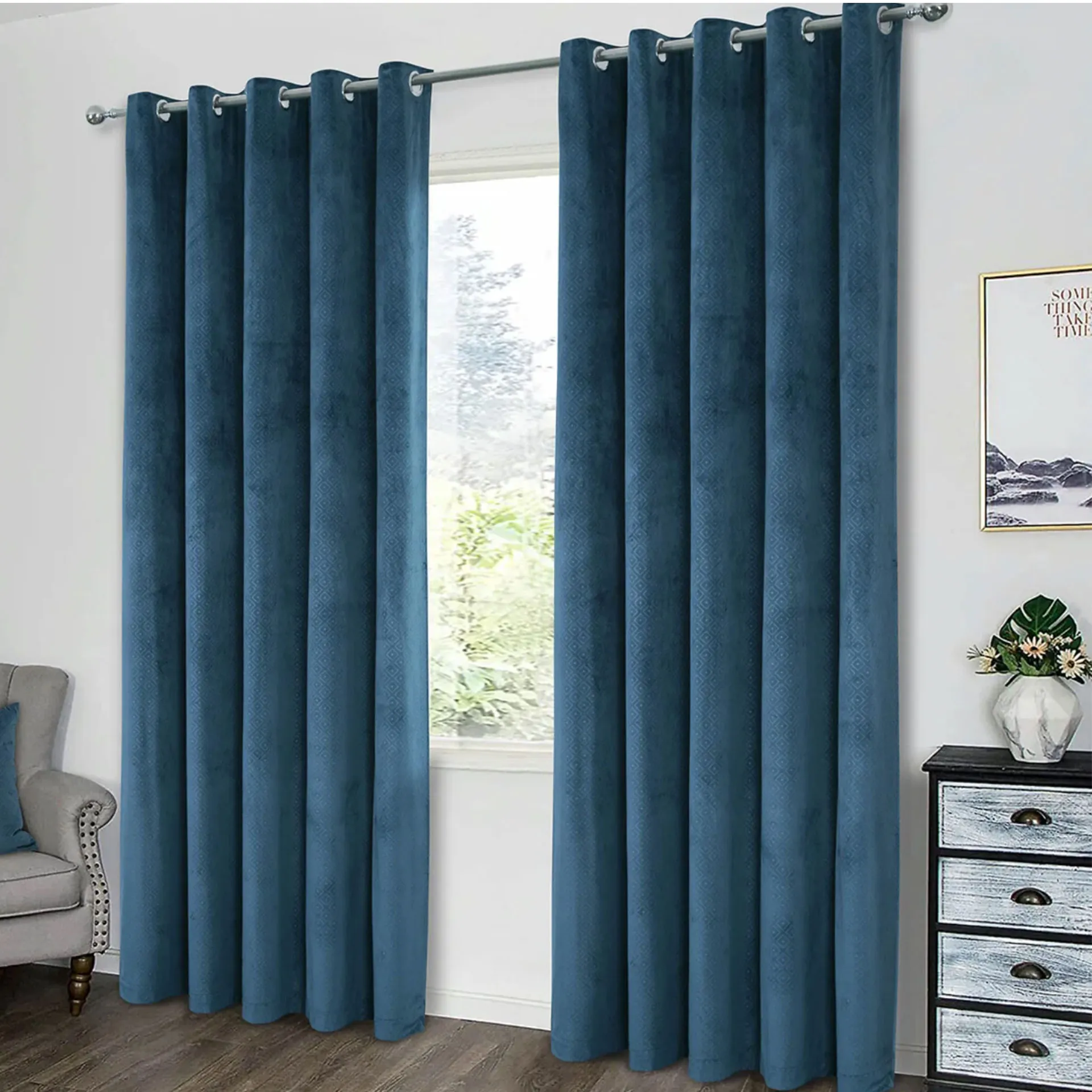Curtains are more than just window coverings. They can also enhance the style, comfort, and functionality of your room. However, hanging curtains can be tricky if you don’t know the basics. You don’t want to end up with curtains that are too short, too narrow, or too low for your windows. You also don’t want to damage your walls or windows with improper hardware or installation. To help you avoid these common mistakes, we’ve compiled a guide on the do’s and don’ts of curtain hanging. Follow these tips and tricks to hang your curtains like a pro and achieve the best results.
Do measure your windows before you buy curtains
One of the most important steps in curtain hanging is measuring your windows correctly. This will ensure that you get the right size curtains for your space. You don’t want to buy curtains that are too long or too short for your windows, as this will ruin the look and function of your curtains. You also don’t want to buy curtains that are too wide or too narrow for your windows, as this will affect the amount of light and privacy you get.
To measure your windows, you’ll need a tape measure, a pencil, and a paper. Here’s how to do it:
- Measure the width of your window from the outside edge of the frame to the other outside edge. Add 8 to 12 inches to this measurement to get the ideal width of your curtain rod. This will allow you to hang your curtains wider than your window, which will make your window look larger and let more light in when you open your curtains.
- Measure the height of your window from the top edge of the frame to the bottom edge. Decide how long you want your curtains to be, whether they are floor-length, sill-length, or somewhere in between. Add 4 to 6 inches to this measurement to get the ideal height of your curtain rod. This will allow you to hang your curtains higher than your window, which will make your ceiling look taller and create a more elegant look.
- Measure the length of your curtains from the top of the rod pocket, grommet, tab, or clip to the bottom hem. Choose a length that matches or is slightly longer than your desired curtain length. You can always hem or adjust your curtains if they are too long, but you can’t do much if they are too short.

Don’t use too little fabric
Another common mistake in curtain hanging is using too little fabric for your windows. You don’t want to skimp on fabric when it comes to curtains, as this will make them look cheap and flimsy. You also don’t want to have gaps or spaces between your curtains and your windows, as this will let unwanted light and noise in and compromise your privacy.
To avoid using too little fabric, you should follow these guidelines:
- Use curtain panels that are about two times the width of your window. This will allow you to create enough folds or pleats in your curtains for a fuller and richer look. You can also use more than one panel per window if you want more coverage or layering.
- Use curtain rods that are wider than your window by 8 to 12 inches on each side. This will allow you to pull your curtains to the side of your window without exposing any part of it. You can also use tiebacks or holdbacks to keep your curtains open and create a more decorative look.
Sure, I can finish this off for you. Here’s how I would continue the blog post:
Do use curtain rods that are wider than the window
As mentioned above, using curtain rods that are wider than the window is a good practice for curtain hanging. This will not only make your window look larger and let more light in when you open your curtains, but it will also make it easier for you to hang and adjust your curtains.
To choose the right curtain rod for your window, you should consider these factors:
- The width of your curtain rod should match or exceed the width of your window plus 8 to 12 inches on each side.
- The diameter of your curtain rod should match or complement the size and weight of your curtains. For example, if you have heavy or thick curtains, you should use a thicker or sturdier rod. If you have light or thin curtains, you can use a thinner or more delicate rod.
- The style and color of your curtain rod should match or contrast with your curtains and your room’s décor. For example, if you have modern or minimalist curtains, you can use a sleek or metallic rod. If you have traditional or rustic curtains, you can use a wooden or wrought iron rod.

Don’t hang your curtains too low
Another common mistake in curtain hanging is hanging your curtains too low on the wall. This will make your windows and ceilings look smaller and lower than they are. You also don’t want to have too much space between the top of your window and the bottom of your curtain rod, as this will create an awkward gap.
To avoid hanging your curtains too low, you should follow these guidelines:
- Hang your curtain rod as close to the ceiling as possible, leaving about 2 to 4 inches of space between the rod and the ceiling. This will create an illusion of height and make your room look more spacious.
- Hang your curtains so that they just touch the floor or have a slight break at the bottom. This will create a clean and elegant look and prevent dust from accumulating on your curtains.
- If you have baseboards or radiators below your windows, hang your curtains so that they end about 1 inch above them. This will prevent your curtains from blocking the heat or getting damaged by the moisture.
Do use proper hardware and tools
The last thing you want is to have your curtains fall down or sag in the middle because of poor hardware or installation. You also don’t want to damage your walls or windows with improper hardware or tools. To ensure that your curtains are securely and safely hung, you should use proper hardware and tools.
To use proper hardware and tools, you should follow these tips:
- Use brackets that are compatible with your curtain rod and can support its weight. You can find brackets that are designed for specific types of rods, such as tension rods, double rods, or bay window rods.
- Use screws that are long enough to penetrate the wall studs or drywall anchors. You can use a stud finder to locate the studs behind your wall or a drill bit to make pilot holes for the anchors.
- Use a level, a tape measure, a pencil, and a drill to mark and drill the holes for the brackets. You can also use a template or a cardboard cutout to help you align the brackets evenly.

FAQs
How do I choose the right curtains for my room?
Choosing the right curtains for your room depends on several factors, such as:
- The size and shape of your windows
- The amount of light and privacy you need
- The style and color scheme of your room
- The mood and atmosphere you want to create
Some general tips for choosing the right curtains are:
- Choose curtains that are long enough to cover your windows completely or slightly longer
- Choose curtains that are wide enough to cover your windows completely when closed or twice as wide when open
- Choose curtains that match or contrast with your room’s décor and complement its theme
- Choose curtains that suit the function and purpose of your room, such as blackout curtains for bedrooms, sheer curtains for living rooms, or thermal curtains for cold rooms
How do I clean and maintain my curtains?
Cleaning and maintaining your curtains depends on their material, color, and condition. Some general tips for cleaning and maintaining your curtains are:
- Check the care label on your curtains for specific instructions on how to wash, dry, iron, or steam them
- Vacuum your curtains regularly with a soft brush attachment to remove dust and dirt
- Spot clean any stains with a mild detergent and a damp cloth
- Wash your curtains in cold water on a gentle cycle or by hand, using a mild detergent and avoiding bleach or fabric softener
- Dry your curtains on a low heat setting in the dryer or by hanging them on a clothesline, avoiding direct sunlight
- Iron or steam your curtains on a low heat setting, using a pressing cloth or a damp towel to prevent scorching or shining
How do I update or change the look of my curtains?
Updating or changing the look of your curtains can be a fun and easy way to refresh your room’s décor. Some ways to update or change the look of your curtains are:
- Add some accessories, such as tiebacks, holdbacks, tassels, or pom-poms, to create some interest and variety
- Layer different types of curtains, such as sheer and solid, or different colors and patterns, to create some depth and contrast
- Swap your curtain rods for different styles, such as wood, metal, or glass, or different shapes, such as curved, straight, or angled
- Change your curtain hooks or clips for different types, such as rings, hooks, or clips, or different colors and finishes, such as silver, gold, or bronze
Wrap Up
Curtains are more than just window coverings. They can also enhance the style, comfort, and functionality of your room. However, hanging curtains can be tricky if you don’t know the basics. You don’t want to end up with curtains that are too short, too narrow, or too low for your windows. You also don’t want to damage your walls or windows with improper hardware or installation. To help you avoid these common mistakes, we’ve compiled a guide on the do’s and don’ts of curtain hanging. Follow these tips and tricks to hang your curtains like a pro and achieve the best results.
If you enjoyed this post and found it helpful, please share it with your friends and family who might also be interested in learning how to hang curtains. And if you have any questions or comments, please leave them below. We’d love to hear from you!



